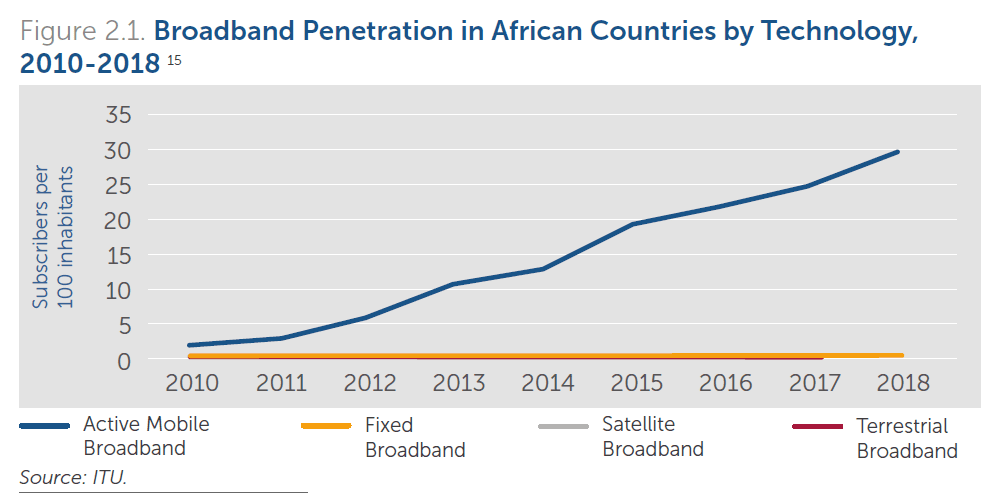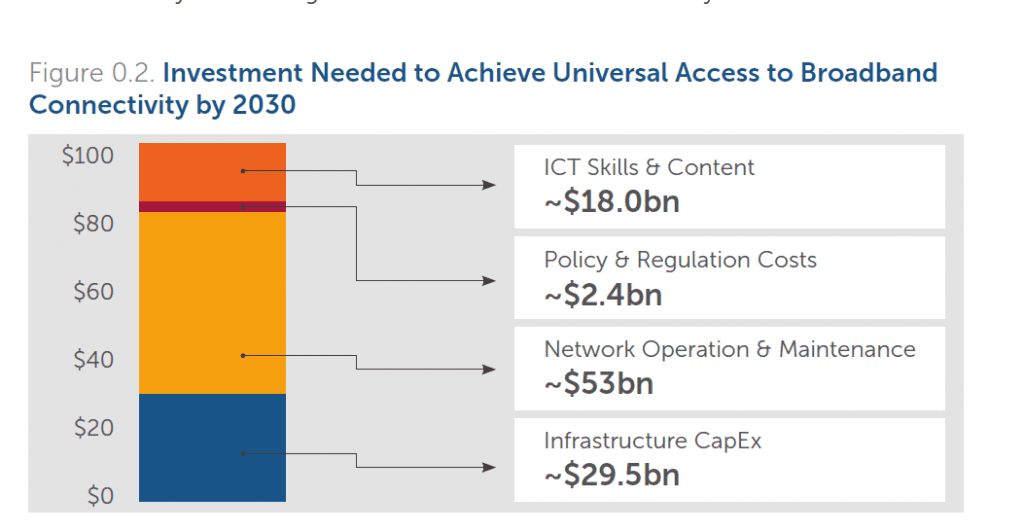#ChartOfTheWeek: Technology Investments Needed to Achieve Internet Coverage for All in Africa

The World Bank this week released their report on the infrastructure and policy needs to have internet coverage for all. The report quoted a massive USD 100 Bn investment in the next ten years if Africa is to be at par with developed regions. It makes it to our #ChartOfTheWeek.
Africa’s Internet Coverage
For the digital economy, high-speed broadband connectivity to access the internet is a critical foundation. Fixed broadband, that is, dedicated, physical links of high-speed internet, connected to homes, offices, and governments, has had very limited reach in Africa.
Although fixed broadband penetration has continuously increased in recent years in urban areas largely because of a sharp drop in subscription charges, mainly in Sub-Saharan Africa, Africa still has the lowest penetration of fixed broadband worldwide.
Subscription charges in Africa are still higher than that in middle-income countries. Monthly subscriptions in Sub-Saharan Africa are more than twice as costly as those in North Africa.

Today, mobile broadband, that is, the use of high-speed internet via mobile or smart device is the principal way by which people across Africa access the internet. Nevertheless, despite the major advances in mobile connectivity and internet access, Africa’s mobile broadband penetration rate (about 25 per cent) is still the lowest worldwide.
While coverage and quality of mobile networks used for the internet varies extensively amongst countries, substantial gaps also remain between urban and rural access within countries. In terms of affordability, the African region has the highest price relative to income for mobile broadband services.
USD 100 Bn Needed

Nearly 1.1 billion new unique users must be connected to achieve universal, affordable, and good quality broadband internet access by 2030, and an estimated additional USD 100 Bn would be needed to reach this goal over the next decade. This is unquestionably a significant infrastructure undertaking, requiring the deployment of nearly 250,000 new 4G base stations and at least 250,000 kilometres of fibre across the region.
It also requires rolling out satellites, Wi-Fi based solutions, and other innovations to reach an estimated population of nearly 100 million that live in remote rural areas that are currently out of reach of traditional cellular mobile networks.
Another required investment is building the user skills and local content foundations to ensure that the deployed infrastructure is used adequately, in a manner that would support its longterm viability.
Investment in developing and implementing adequate policy and regulatory frameworks will also be required to create market conditions that foster technology deployment, the development of a broader technology ecosystem, and overall broadband service affordability.